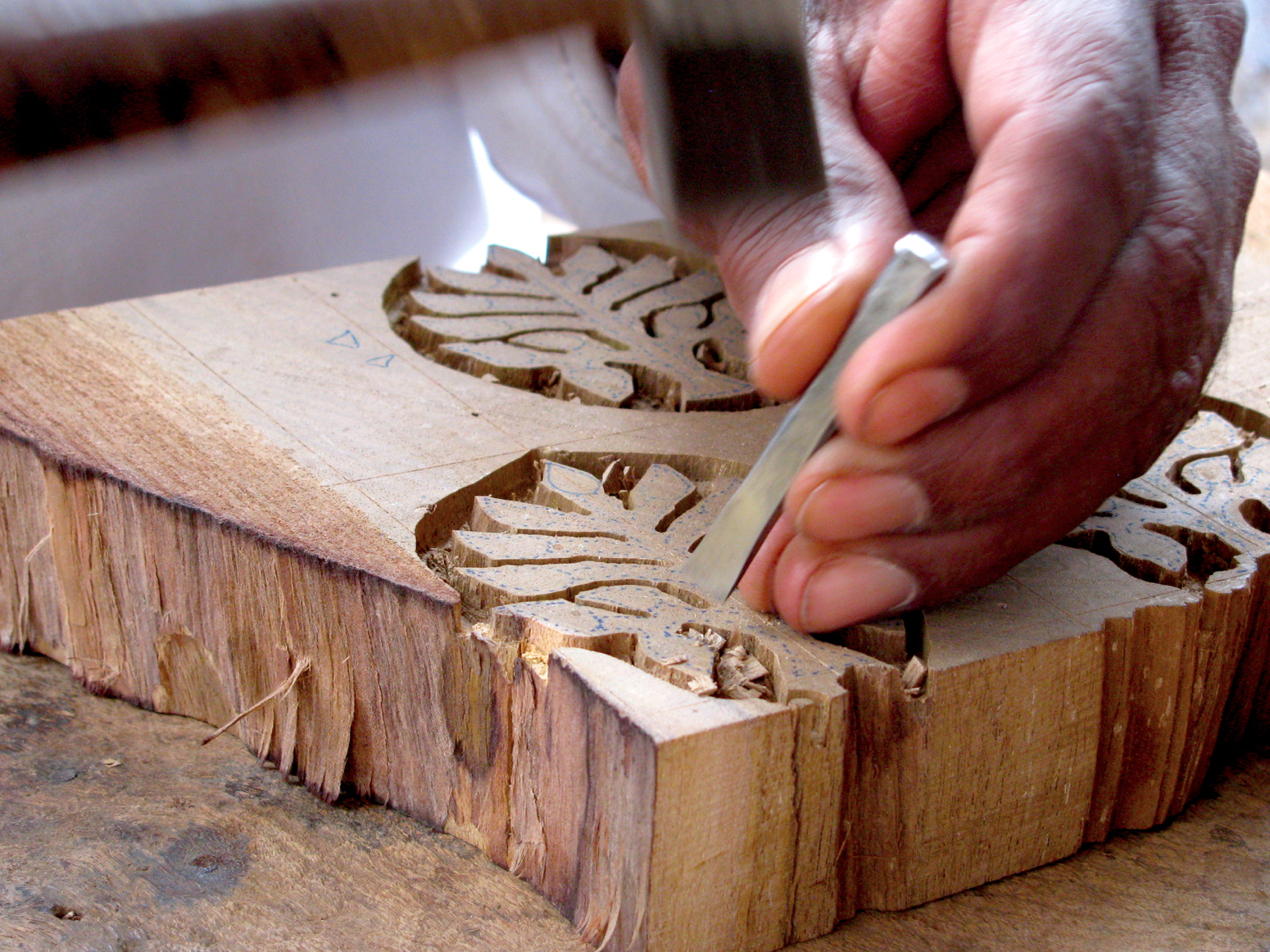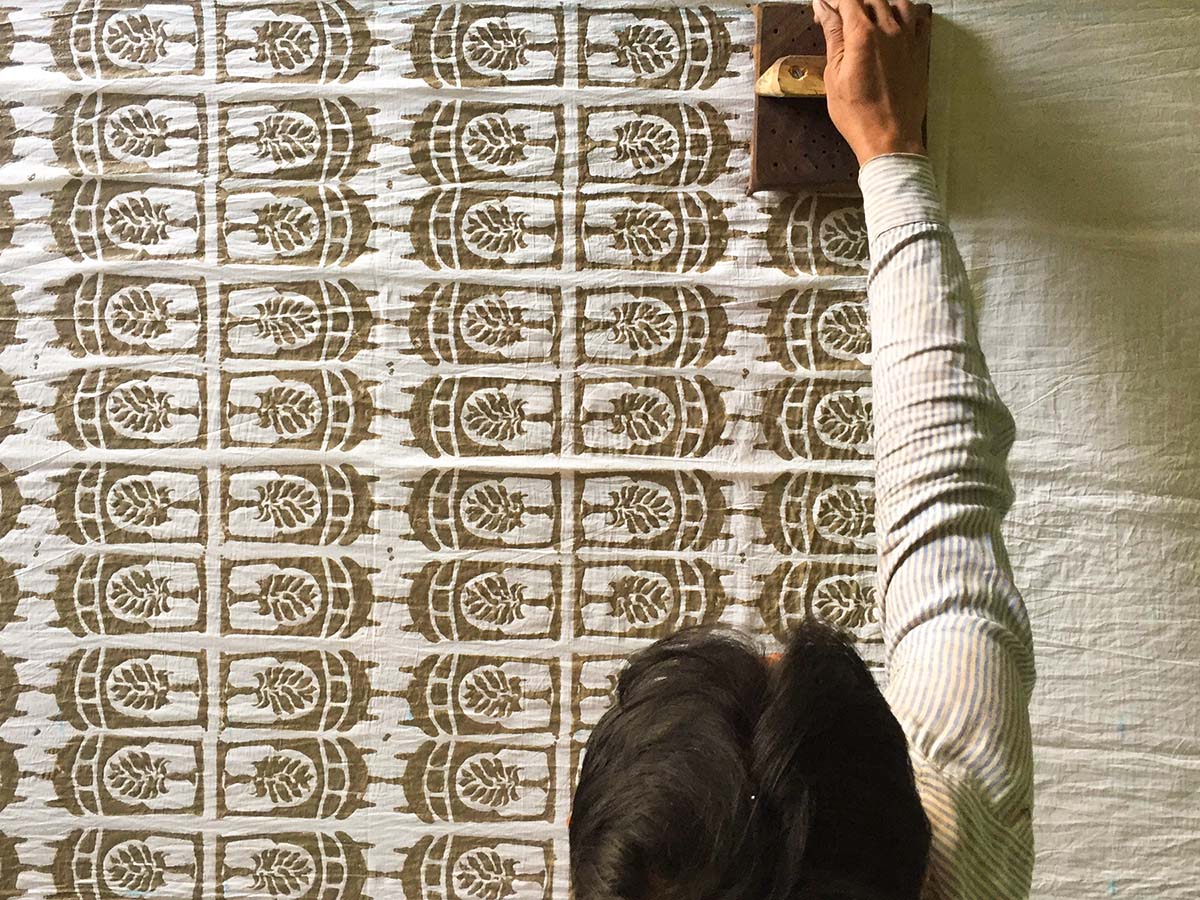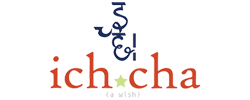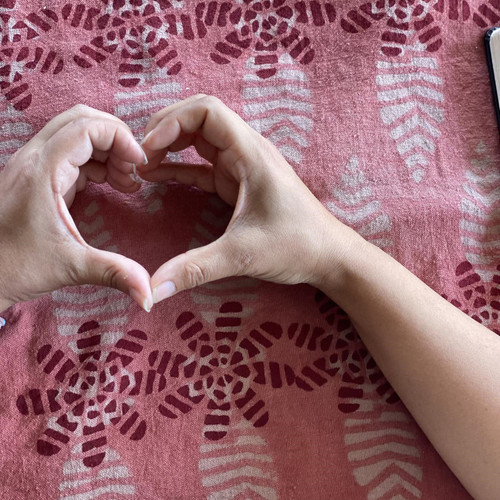BLOCK PRINTING PROCESS
Posted by Rachna Kumar on 19th Oct 2022
The Process of Block Printing: a Step by Step Guide
Before delving into the process of block printing, what is this ancient printing method all about?
Block printing has become a popular hobby and profession worldwide, and many block print designs on fabric are now available in the United States even though the art didn't originate locally. So whether you're looking to master the block printing process as a hobby, make money out of it, or purchase some colorful block-printed fabric, this article explores the history of block printing and a step by step process to make your first masterpiece.
What is Block Printing?
Block printing is a printing technique that uses a solid material to transfer ink into fabric. The block printing process involves engraving a design on the material, known as the block, inking the design, and then using the block as a stamp on the fabric. The resulting design will be a mirror image of the one on the block. The block may be a piece of wood, plastic, or any other suitable material. No machine is required to do block printing, making the process an incredible hobby among artful Americans.
A Little Block Printing History
Back in the day, India, specifically the region of Rajasthan, was filled with multiple tribes who were known for the work they did. One of those groups was the block printers. They used to create block printed fabrics for the various tribes in the region. Each design, with various motifs, specified your job or the tribe you belonged to. You could tell whether a person was a farmer or Metal smith by the printed shirt or turban worn.
The strict separation of the tribes has slowly dissipated but what remains are a few stories by the older generation, still keeping alive the secrets of the motif and the craft of block printing.
To the artisans we work with, the Art of Block Printing has been their tradition and way of life for the past four generations. It continues to the latest generation that strives to keep the family craft alive by finding new markets and ways to keep up with fashion. The only thing that remains true is the beat of the wooden block on the table, the 20-year-old and 10-ft-deep indigo dye vat, and the passion to continue.
Advantages of Block Printing
The benefits of block printing include the following:
- The creative process of block printing allows you to make your own designs and patterns
- You may block print multiple textiles with one block, but because it is printed by hand, each textile would be different from another - making it special and unique
- Block Printing is a sustainable practice
- Block Printing with Natural Dyes is an eco-friendly process. It does not harm the environment
- This process supports the handmade community and their traditions that are passed down from generations. Block printing is not just work for Artisans, it is their way of life from generations. Supporting them - keeps their way of life flowing.
The Process of Block Printing in 5 Steps
Hand Block Printing with natural or vegetable dyes is an ancient printing technique. This art form has been around for ages and saw its most glorious years around the 12th Century. Today, it is competing against the fast world but surviving due to the people who still value them. "BLOCK" means a wooden square piece with an engraved pattern. This block is used to print on fabric – and the process is called block printing. The fabric is then called a block print fabric.
One incredible thing about block printing is that no two designs are the same. So this can be a great way to make your clothing stand out.
If you're looking to get some unique block printed textiles and turn heads as you walk, head to our store: ichcha and place your order. We ship block-printed designs and fabrics throughout the United States and worldwide. Clothing, tablecloths, napkins, aprons, we offer them all. Free shipping on orders over $75.
Now, on to the process of block printing. There are a few different types of block printing, each with a different procedure.
I have listed the process of "DABU" block printing below. DABU is an ancient mud resist hand block printing technique.
Step 1: CARVING
Master block carvers, who have been doing this for many years, carve these blocks. These blocks are carved by a chisel and wooden hammer to form a beautiful design pattern.

Step 2: PRINTING
There are a couple of block printing techniques but the one that we work with is called Dabu. Dabu is a mud resist made by mixing together fuller’s earth, gum and few other natural ingredients. It is mixed into a paste not by hand nor by machine, but by foot, just like grapes were crushed to make wine in the yesteryears!
Once this paste is ready, the fabric is printed with a block using that resist. The areas that are stamped resist any dye that the fabric is dipped in. Check out this cotton napkin made using the dabu block printing method.



Step 3: DRYING
Sun is crucial to this process. At every step the block printed fabrics have to dry in the open fields under the sun.
Fun fact: Did you know, that most of this work comes to almost a stand still in the Monsoon seasons of July and August?!

Step 4: DYEING
After the fabric has been printed, it gets dyed. We work with dyes made with natural materials found in our surroundings, such as flowers, leaves, spices and various other natural metals! Below is an indigo vat that has been going on for several years!

Step 5: WASHING & DRYING
After dyeing, the fabrics get washed by hand.
More so than not, block printing is a multiple step process where the fabric gets re-printed, re-dyed to bring out the designs we want.


And that sums up the process of block printing! Of course we stumble upon lot of problems as the color doesn't always come out right, or the print got messed up while printing or dyeing - but that's life - and we take it as it comes!
You can find the final results of these fabrics at --> www.ichcha.com


